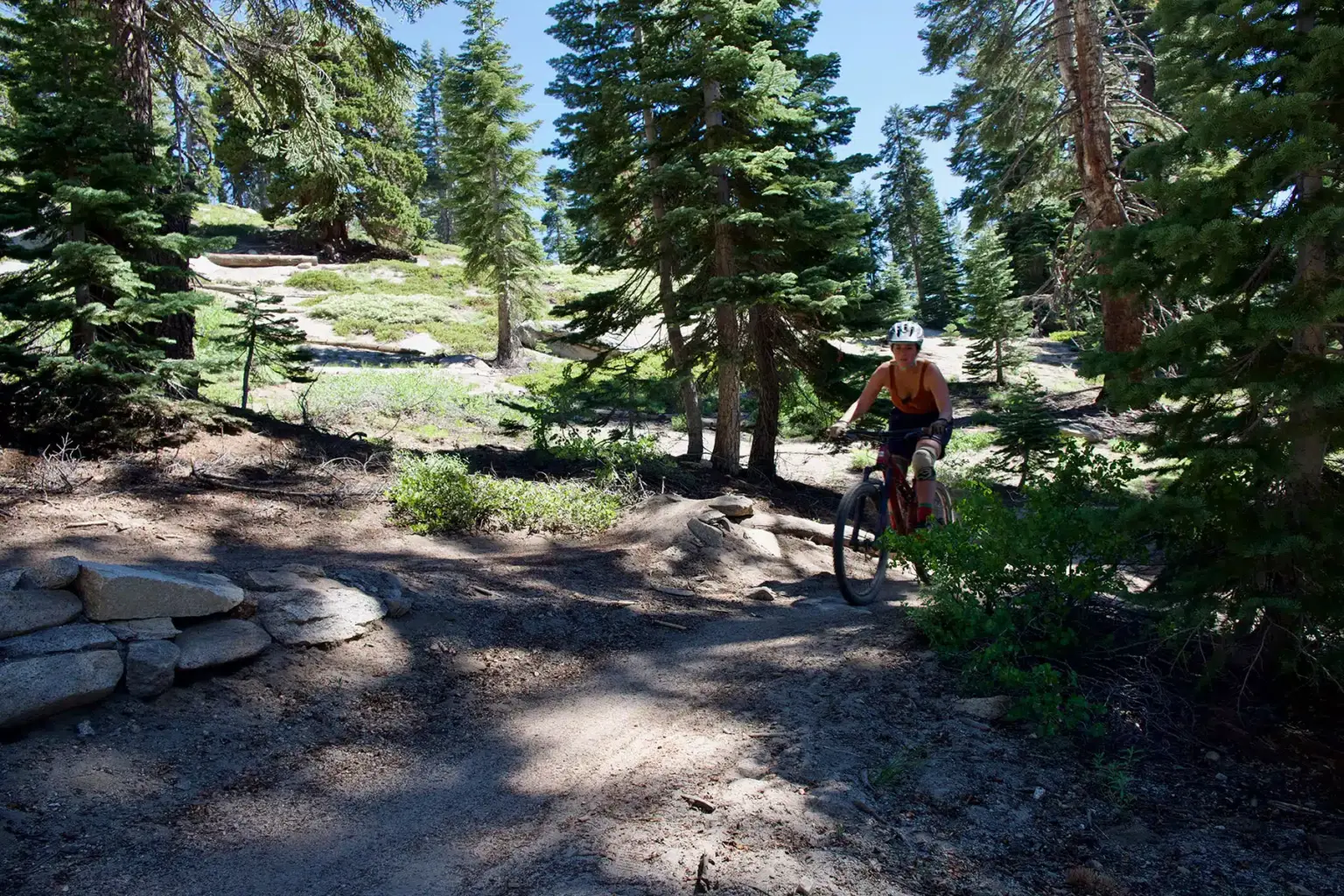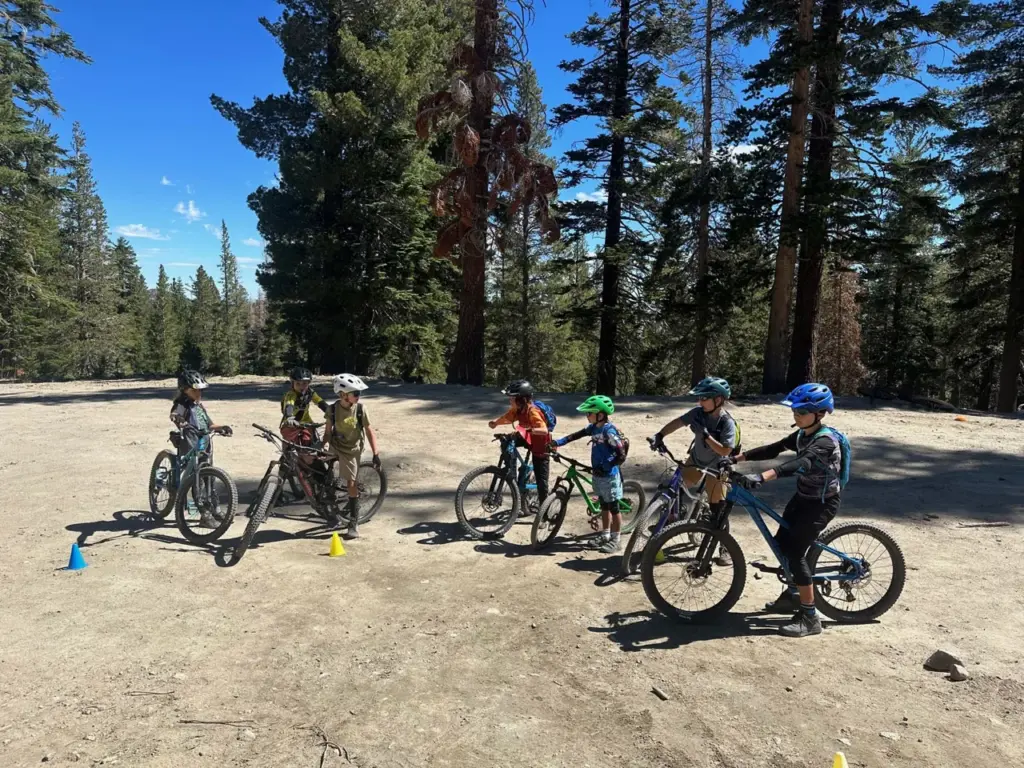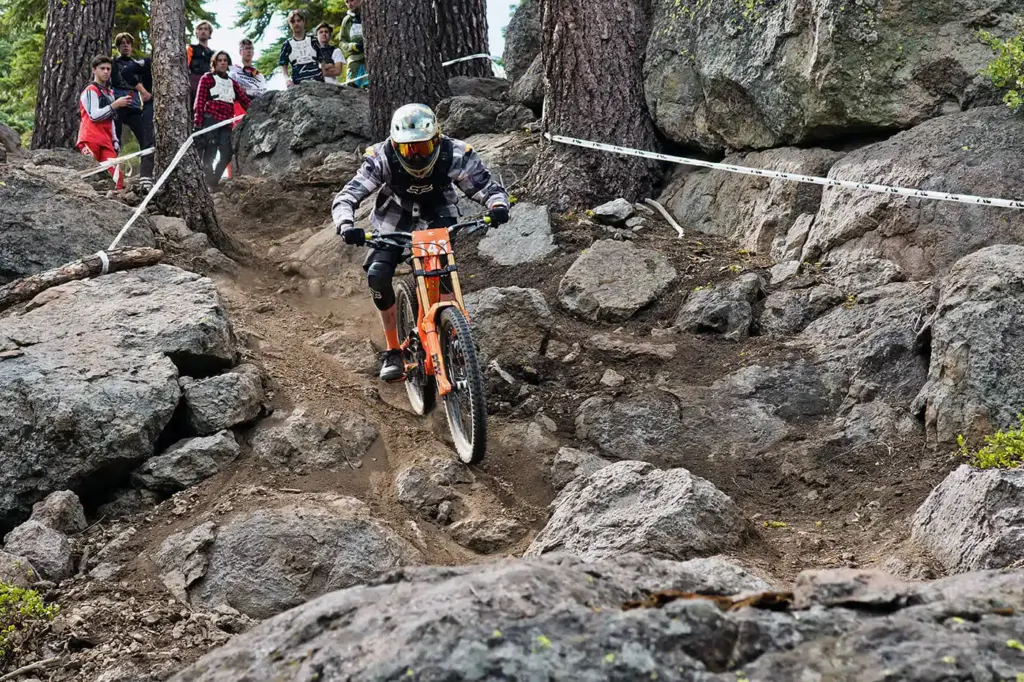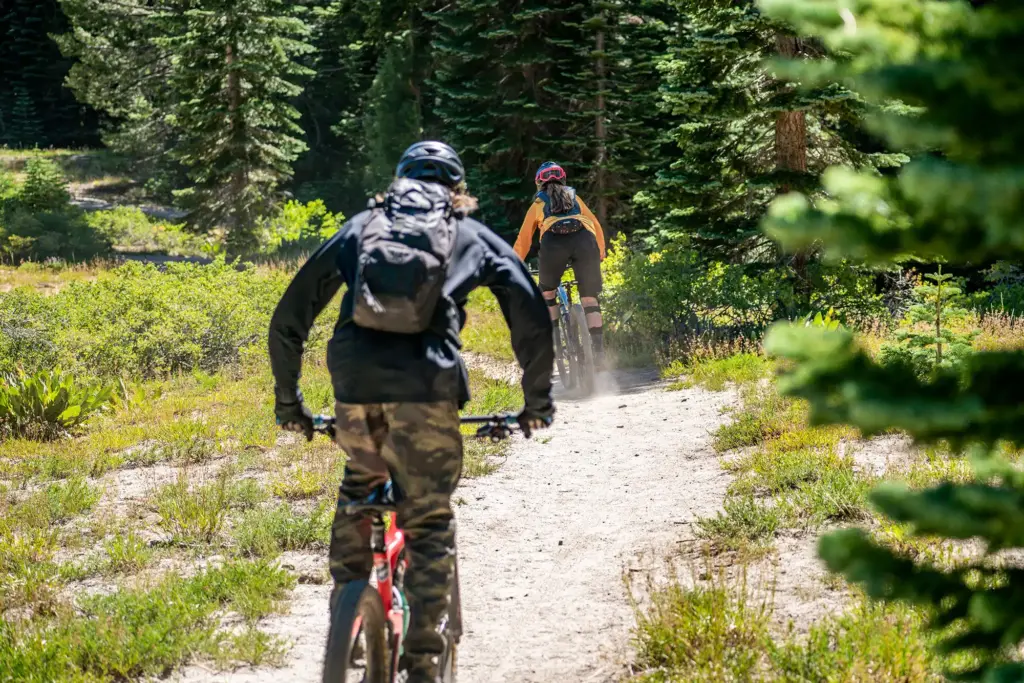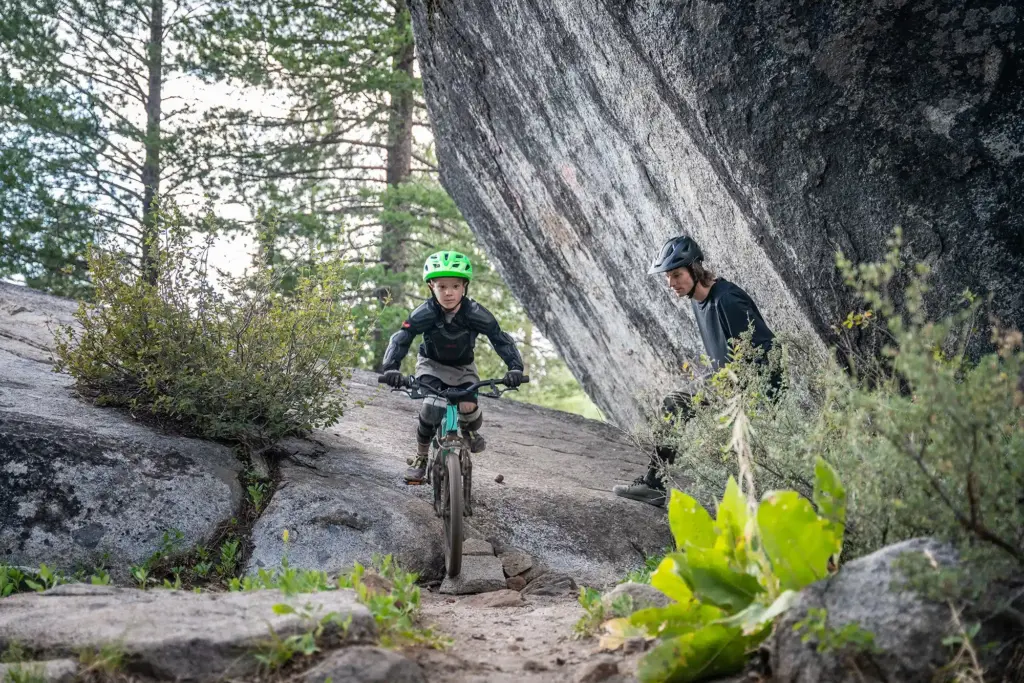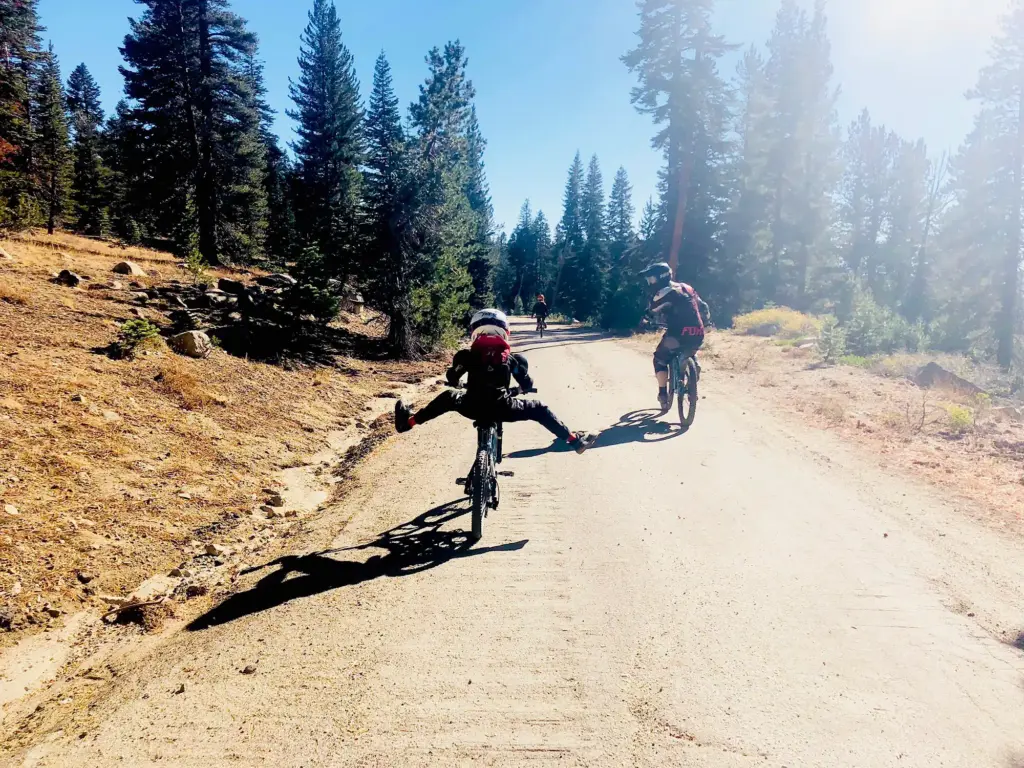Introduction
Mountain biking combines intense physical challenge with the thrill of outdoor adventure. Whether you’re a newbie or an intermediate rider, focusing on specific aspects of your biking can yield quick improvements. This extensive guide offers practical advice to enhance your riding, promote safety, and boost confidence across varying terrains.
Understand Your Gear
Choosing the Right Bike
Selecting the right bike is foundational to your mountain biking success. Whether it’s a nimble cross-country bike or a sturdy downhill performer, the right type of bike enhances your ride quality and enjoyment. Explore options and what to consider here.
- Fit is Everything: Ensure the bike frame fits your body size. A proper fit enhances control, improves riding efficiency, and reduces fatigue and injury risk. Visit a local bike shop to get sized correctly and to test different models for the best fit.
- Type of Terrain: Match the bike to your most frequent riding terrain. Choose a cross-country bike for long distances and minimal obstacles, a trail bike for a versatile ride on varying terrains, or a downhill bike for steep and rocky descents. Understanding the primary use will guide you to the most appropriate model.
- Component Quality: Invest in a bike with high-quality components. Look for reputable brands of suspensions, brakes, and drivetrains. Higher quality components mean better performance, more durability, and fewer maintenance issues down the road.
- Enduro Readiness: For riders interested in both climbing and descending on challenging trails, an enduro bike is ideal. These bikes are designed to perform well under the pressures of enduro racing, which includes high-speed downhill sections combined with technical climbs.
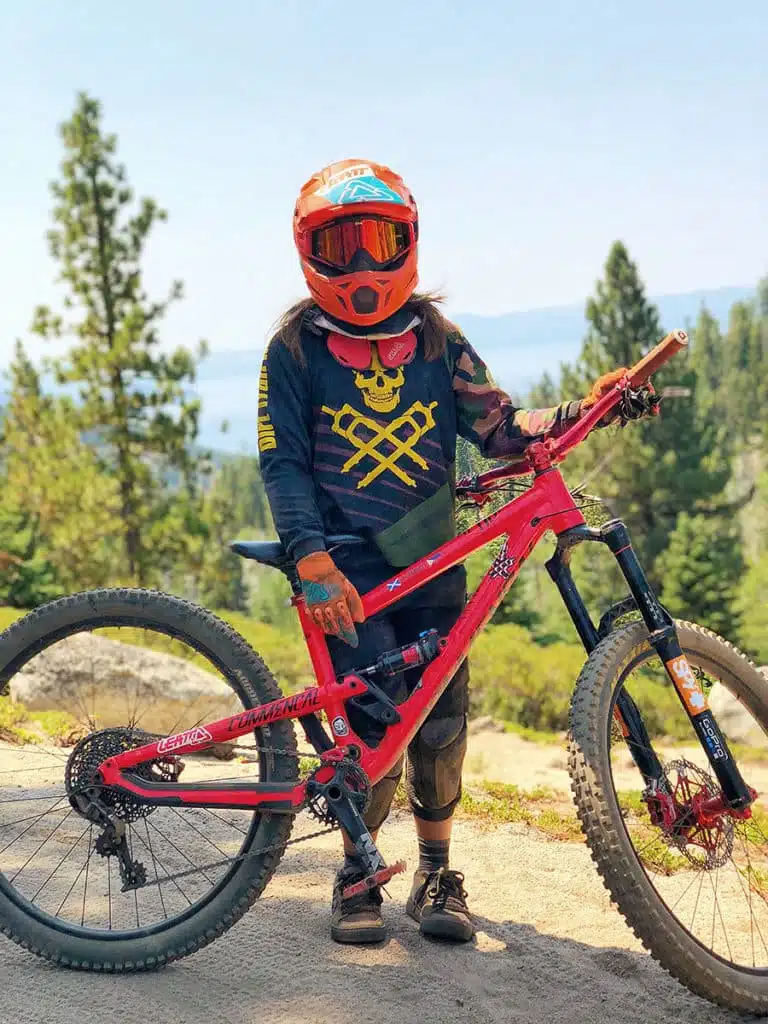
Fine-Tuning Your Setup
An optimal bike setup tailored to your body enhances both comfort and control. Adjustments to saddle height, handlebar alignment, and suspension settings are crucial for efficient riding and can significantly affect your overall performance and injury risk.
- Saddle Height Adjustment: Setting the correct saddle height is crucial for efficient pedaling and avoiding strain on your knees. A good rule of thumb is to adjust the saddle height so that your leg has a slight bend when your foot is on the pedal at its lowest point. This position helps maximize power while ensuring comfort.
- Handlebar Alignment: Proper handlebar alignment can significantly improve your control and comfort on the bike. The handlebars should be positioned to allow a slight bend in your elbows when riding, helping to absorb shocks and reduce fatigue on longer rides.
- Suspension Tuning: Tailor your bike’s suspension to match the specific demands of the terrain you ride most often. This adjustment helps absorb bumps, improve traction, and maintain stability. Use a professional bike fitting service or consult with experienced riders to find the best settings for your weight and riding style.
Mastering Mountain Biking Techniques
The Basics of Braking
Effective braking is crucial for safe mountain biking. Learning how to apply your brakes properly without skidding or losing control can dramatically improve your handling, especially on descents and in wet or loose conditions.
- Progressive Braking Technique: Learn to apply your brakes progressively rather than all at once to avoid skidding. Start with gentle pressure on the brake levers and increase gradually until you achieve the desired stopping power. This technique provides better control, especially on descents and slippery surfaces.
- Front vs. Rear Brake Balance: Understand the function of each brake. The front brake provides most of your stopping power, while the rear brake helps control speed and prevents skidding. Practice using them in unison to achieve a balanced and effective stop, adjusting the pressure based on terrain and speed.
- Braking Before Turns: Always reduce your speed before entering a turn rather than braking sharply while in the turn. This approach helps maintain traction and control, allowing for a smoother and safer ride. Practice timing your braking as you approach turns to optimize performance and safety.
Perfecting Your Pedaling
Optimal pedaling efficiency means more power with less effort. This involves choosing the right gears and maintaining a smooth cadence, which can help conserve energy over long rides and tough climbs.
- Gear Selection: Choosing the right gears is essential for maintaining efficient pedaling. Use lower gears for climbing and higher gears when riding on flat or downhill sections. Mastering when to shift helps maintain a steady cadence and prevents you from tiring out too quickly.
- Adapt Cadence to Terrain: Adjust your cadence according to the terrain to optimize energy use and maintain control. On rough trails, a slightly lower cadence can improve your bike’s handling and traction, allowing for more precise adjustments to sudden changes in the terrain. Practice varying your pedaling speed to find what works best for different trail conditions.
- Pedal Technique: Work on the full pedal stroke technique, engaging not just the downstroke but also the upstroke by pulling up on the pedals. This method distributes the work more evenly across your leg muscles, increasing efficiency and reducing the overall exertion needed during your ride.
Advanced Cornering Techniques
Cornering on mountain bike trails requires practice and precision. Techniques like adjusting your body weight and choosing the correct line through turns can significantly enhance your speed and stability.
- Body Positioning: Adjust your body weight according to the type of corner you are navigating. For sharp turns, lean your body into the inside of the turn while keeping your bike slightly upright. This technique helps maintain traction and control through the corner.
- Choosing the Correct Line: Always aim to choose the best line through a corner, which often means entering wide, cutting tight to the apex, and exiting wide. This “outside-inside-outside” path allows for smoother and faster cornering by minimizing the sharpness of the turn.
- Brake Before the Turn: Effective cornering involves good braking technique. Always brake before entering a turn rather than during the turn. This prevents loss of traction and allows you to maintain a higher speed through the corner. Practice modulating your brakes smoothly to avoid locking them up as you approach turns.
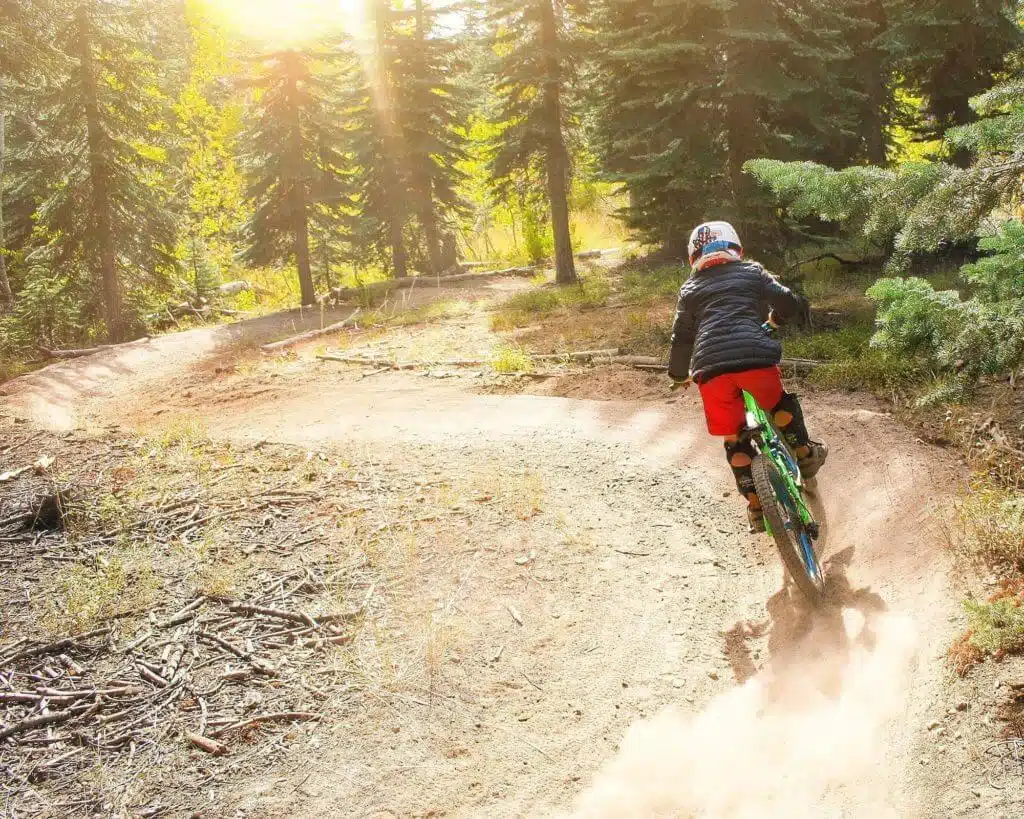
Physical and Mental Conditioning
Building Core Strength
Strong core muscles underpin effective mountain biking. They help maintain balance, control during technical maneuvers, and endurance over long distances.
- Routine Core Exercises: Incorporate specific core-strengthening exercises into your training routine, such as planks, bridges, and bicycle crunches. These exercises build the abdominal, lower back, and oblique muscles, which are crucial for maintaining balance and stability on the bike.
- Dynamic Balance Training: Engage in dynamic balance activities like yoga or pilates, which not only strengthen the core but also improve flexibility and overall body coordination. These practices help you handle sudden shifts in weight and direction, especially useful during technical trail riding.
- Integrate Core Work on the Bike: Practice maintaining a firm and active core while riding. This involves consciously tightening your abdominal muscles to create a stable base for your upper body, which helps absorb shocks and maintain control over rough terrain. Regularly focusing on this during rides will enhance your core strength and endurance over time.
Mental Strategies for Trail Challenges
Developing mental resilience is key to mountain biking. Techniques for maintaining focus and managing trail anxiety include visualization and goal-setting, which can enhance both performance and enjoyment.
- Visualization Techniques: Practice visualizing your rides before you hit the trails. Imagine yourself navigating challenging sections successfully and maintaining control under pressure. This mental rehearsal can boost confidence and improve your real-world performance.
- Goal-Setting Strategies: Set specific, achievable goals for each ride or trail. Whether it’s improving your time, mastering a difficult section, or staying calm under pressure, having clear objectives can help maintain focus and motivation throughout the ride.
- Anxiety Management: Learn techniques to manage trail anxiety, such as deep breathing or focusing on positive outcomes. When faced with challenging sections, take a moment to steady your breathing and refocus your mind. This can help reduce tension and enable a clearer, more composed approach to obstacles.
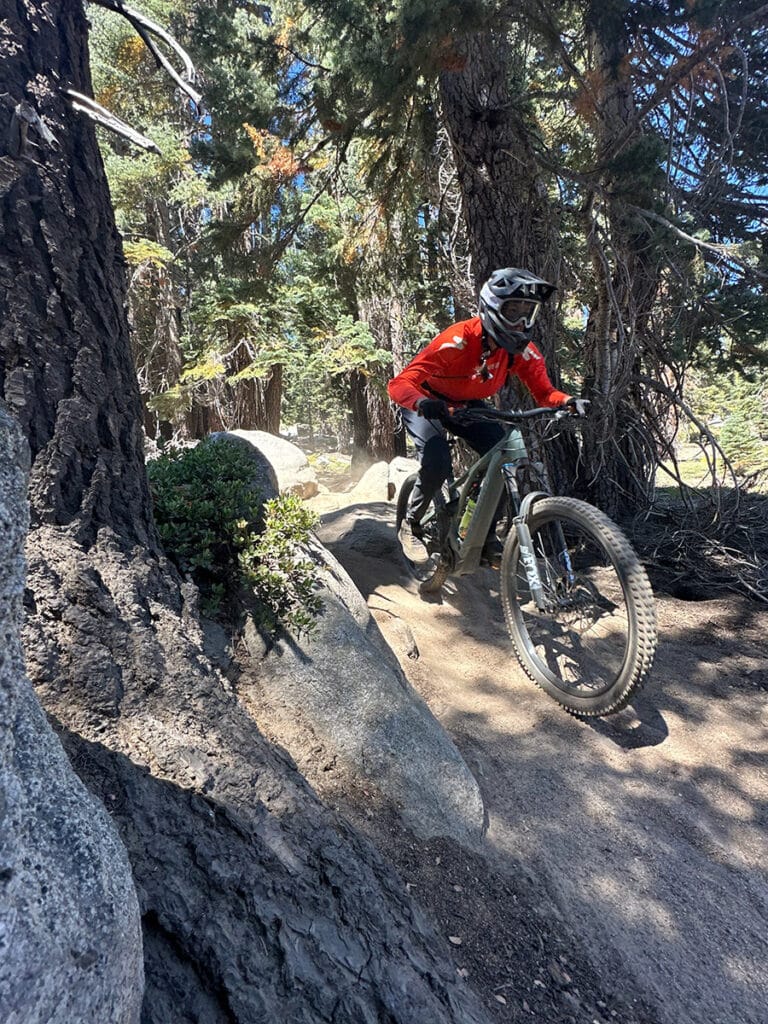
Ride Preparation and Safety
The Importance of a Proper Warm-Up
A comprehensive warm-up activates muscles and prepares your body for the rigors of mountain biking, reducing the risk of injury and improving your physical performance. Effective routines can be found here.
- Dynamic Stretching: Begin with dynamic stretches to increase blood flow and flexibility in key muscle groups used in mountain biking, such as your legs, back, and shoulders. Movements like leg swings, arm circles, and torso twists are effective for preparing your body for the physical demands of riding.
- Cardio Warm-Up: Include a short cardiovascular warm-up to raise your heart rate and activate your respiratory system. This could be a brisk walk, a gentle jog, or cycling at a low intensity for 5-10 minutes before you hit the trails.
- Practice Drills: Perform bike-specific drills such as slow riding, figure eights, and light pedal effort on flat terrain. These drills help fine-tune your coordination and bike handling skills, ensuring you’re fully prepared to tackle the trail ahead.
Essential Safety Gear
Safety gear is crucial regardless of skill level. Helmets, gloves, and appropriate eyewear protect against common injuries, while body armor and pads are advisable for more aggressive riding styles.
- Helmets Are Mandatory: Always wear a helmet to protect against head injuries. Choose a helmet that fits well, is specifically designed for mountain biking, and meets safety standards. This is your most crucial piece of safety equipment, as it can significantly reduce the risk of serious injury.
- Protective Clothing and Pads: Depending on your riding style and the terrain, consider additional protective gear such as gloves, padded shorts, knee pads, and elbow pads. These items provide extra cushioning and protection in the event of falls or when riding through rough terrain.
- Proper Eyewear: Use appropriate eyewear to shield your eyes from dirt, debris, and the elements. Goggles or impact-resistant sunglasses designed for mountain biking can prevent eye injuries and enhance visibility by reducing glare and increasing contrast.
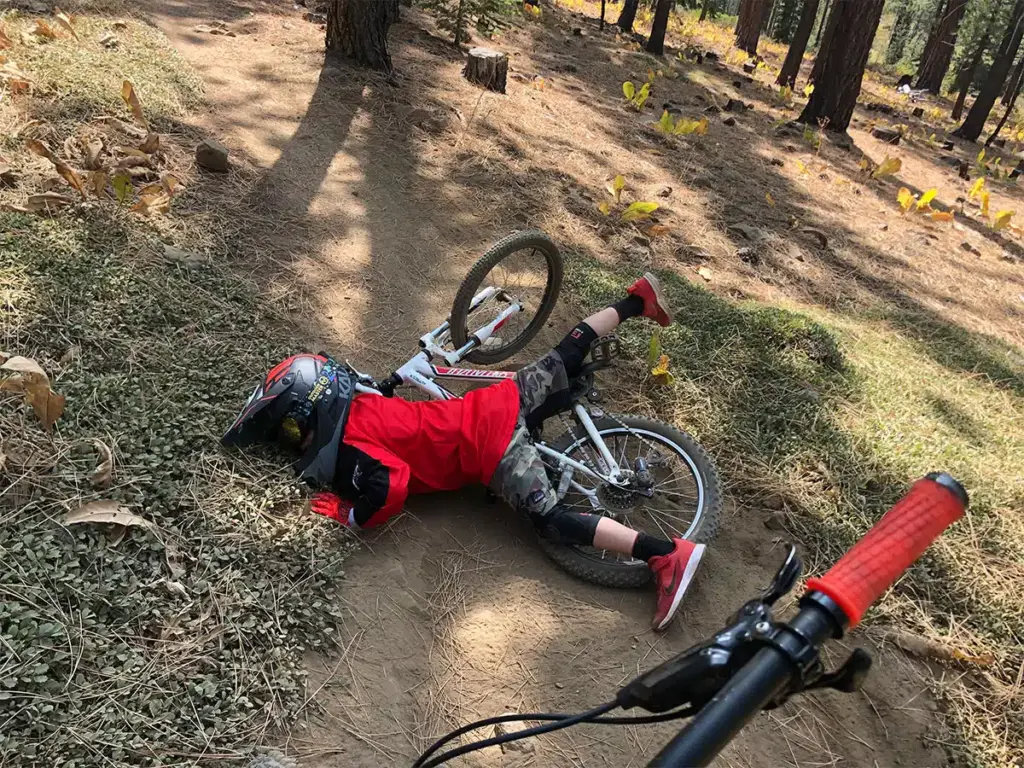
Maintaining Your Mountain Bike
Regular Bike Maintenance
Good maintenance is key to ensuring your bike performs well and lasts longer. This includes routine cleaning, adjusting brakes and gears, and inspecting for wear and tear.
- Routine Cleaning: Keep your bike clean from mud, dust, and debris. Regular cleaning not only maintains its appearance but also allows for the early detection of any wear or potential issues. Use a gentle brush and hose to clean off debris, and ensure all moving parts are free of grit that can cause premature wear.
- Brakes and Gears Adjustment: Regularly check and adjust your brakes and gears. This includes making sure that brake pads are not overly worn and that all gears shift smoothly. Proper adjustment can prevent accidents caused by brake failure and improve your overall riding experience.
- Wear and Tear Inspection: Conduct routine inspections of your bike’s frame, tires, and components. Look for cracks, rust, and other signs of wear that might compromise safety or efficiency. Replace any worn parts promptly to keep the bike in optimal condition for the trails.
Handling Common Repairs
Knowing how to manage typical repairs like fixing flats or realigning a derailed chain can save time and frustration, keeping you riding smoother and longer.
- Fixing Flats: Learn how to quickly and efficiently fix a flat tire, a common issue for mountain bikers. Carry a spare tube, tire levers, and a portable bike pump or CO2 inflator on your rides. Knowing this skill can significantly cut down on your downtime and get you back on the trail faster.
- Realigning a Derailed Chain: Be prepared to handle a derailed chain, which can occur from rough riding or a misshift. Practice how to properly put the chain back on the gears and check for potential issues that could cause further derailments, such as bent derailleurs or loose chain links.
- Adjusting Brakes and Derailleurs: Familiarize yourself with the basics of adjusting your brakes and derailleurs. These adjustments can improve your bike’s performance and are essential for maintaining safety and efficiency. Carry a multi-tool with you on rides to make quick adjustments as needed.
Joining the Mountain Biking Community
Finding Riding Groups and Trails
Connecting with local riding communities introduces you to new trails and riding tips, and can enhance your skills through shared experiences. Social platforms and local bike shops are great resources for finding groups.
- Utilize Social Platforms: Leverage social media groups and platforms like Facebook, Meetup, or Strava to connect with local riding communities. These platforms often have dedicated groups where members share trail updates, organize group rides, and offer tips for beginners and experienced riders alike.
- Visit Local Bike Shops: Local bike shops are not only great for gear and repairs but also act as hubs for the biking community. Many shops host group rides and events and can provide recommendations for local trails suited to various skill levels. Building relationships with shop staff can also keep you in the loop about local biking activities.
- Participate in Local Events and Races: Attending local events, races, or biking festivals is another excellent way to meet other riders and discover new trails. These events often feature rides of varying difficulties, providing opportunities to improve your skills and connect with riders at your level.
- Join a Summer MTB Camp: If you are a younger rider, consider joining one of our summer mountain biking camps. These camps are a fantastic way to learn mountain biking skills, meet other young riders, and enjoy the outdoors in a structured and supportive environment.
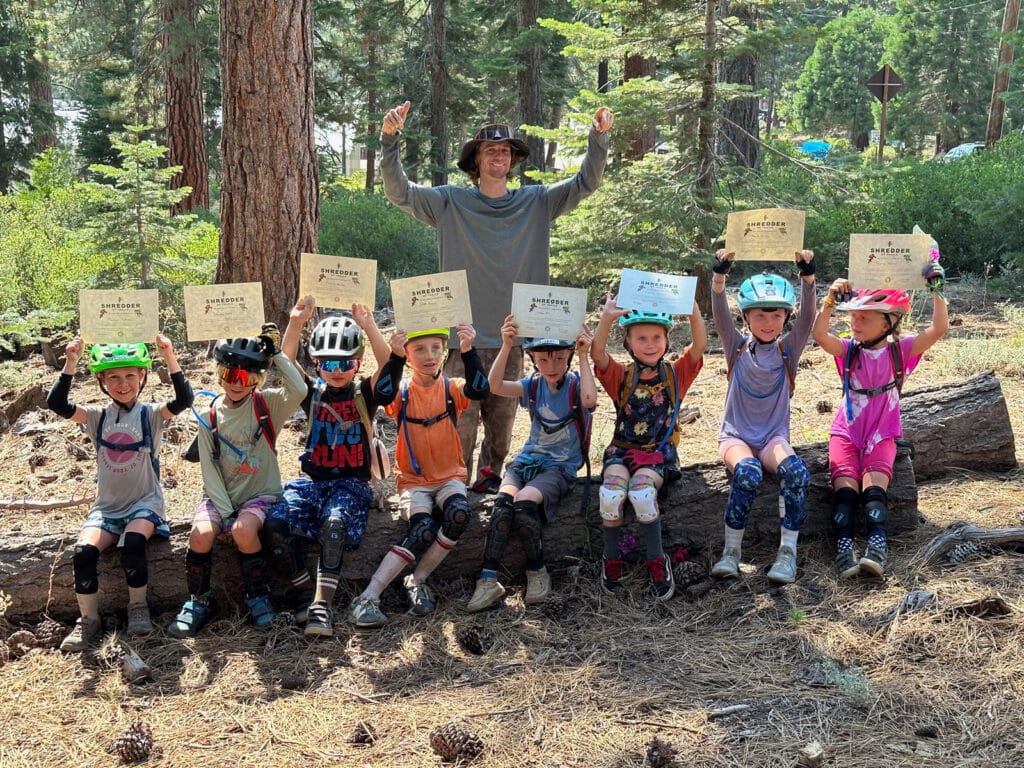
Participating in Races and Events
Competing in events challenges you and provides exposure to advanced riding techniques, helping to accelerate your learning curve and benchmark your skills against those of other riders.
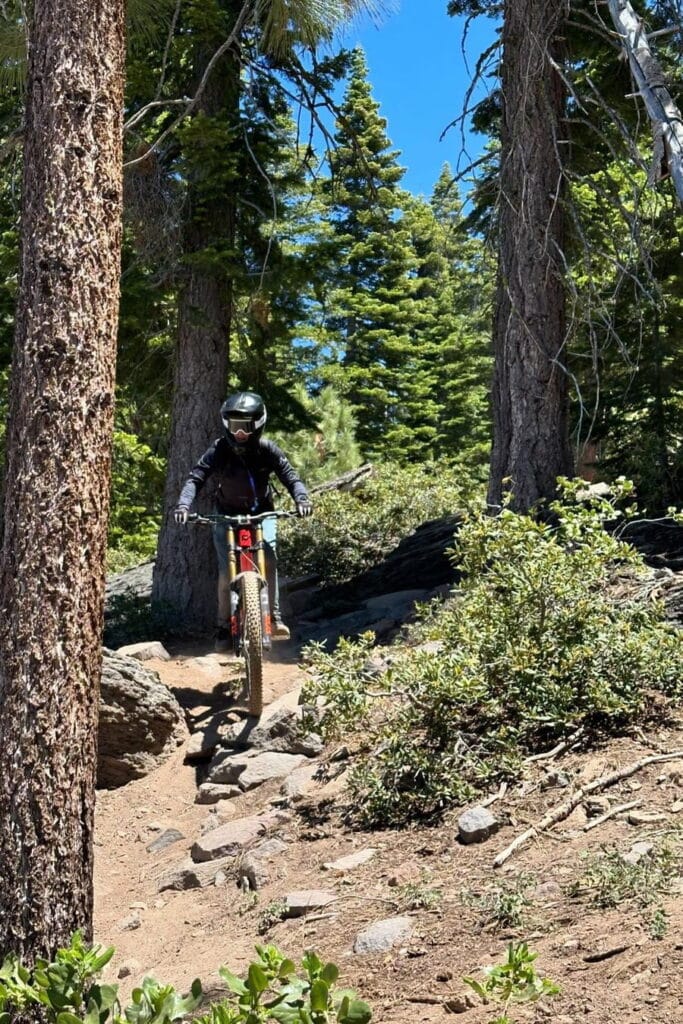
Improving Riding Techniques Through Feedback
Learning From Others
Feedback from fellow riders and coaches can provide new insights into your riding technique, offering chances for quick improvements. This constructive critique is invaluable for learning and development.
Using Technology for Improvement
Technological tools like GPS bike computers and video recordings can analyze your performance, providing detailed feedback that helps refine your techniques and strategies.
Navigating Various Terrains
Adapting to Different Trail Conditions
Different trails require different approaches. Learning to adapt your riding style to match the terrain—from rocky paths to muddy tracks—can greatly improve your control and speed.
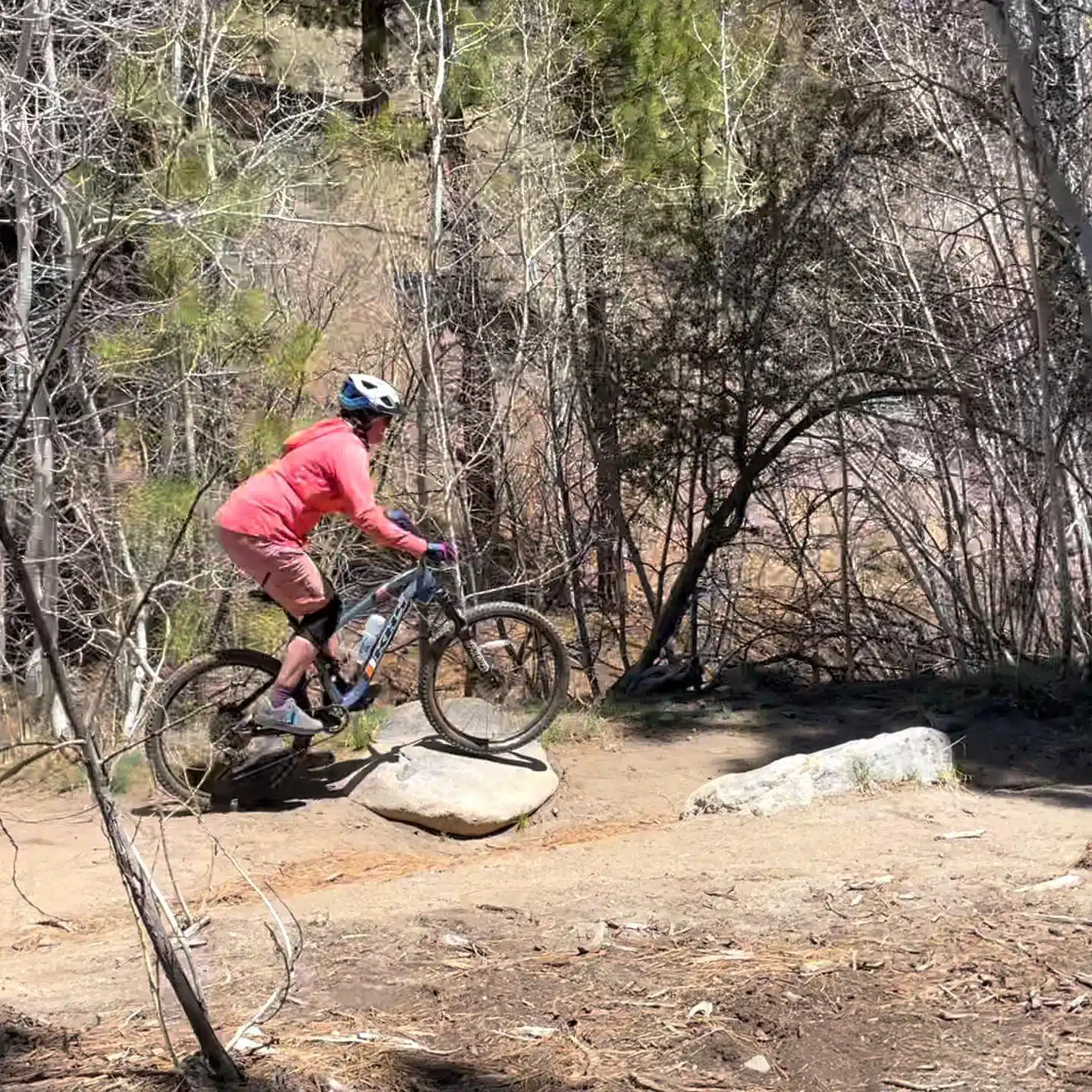
Strategies for Challenging Terrain
Tackling challenging terrains such as steep hills or technical descents requires specific strategies and skills. Developing these through practice and training can significantly boost your confidence and capability on difficult trails.
- Understanding Trail Surfaces: Familiarize yourself with the types of surfaces you’ll encounter, such as rocky paths, loose gravel, or muddy tracks. Each surface requires different handling techniques. For example, lower your bike’s tire pressure to increase traction on slippery, muddy trails, or maintain higher pressure for rocky, hard-packed paths.
- Adjust Riding Techniques: Adapt your riding style according to the trail conditions. On muddy and slippery trails, focus on keeping your weight balanced and use a gentle touch on the brakes. In contrast, on rocky terrains, it’s important to lift off the saddle slightly to allow your legs to act as natural shock absorbers.
- Preparation and Anticipation: Always scout the trail ahead as much as possible and prepare for sudden changes in terrain. Anticipating upcoming obstacles allows you to adjust your speed and position in advance, enhancing both safety and performance on diverse trails.
Building a Long-Term Development Plan
Setting Achievable Goals
Long-term improvement in mountain biking is best achieved by setting clear, achievable goals. These goals should be specific, measurable, and tailored to your personal riding aspirations.
- Be Specific with Objectives: Set specific goals such as improving your climbing speed, mastering a particular technical trail, or increasing your endurance for long rides. Being precise helps you focus your training efforts and measure your progress more effectively.
- Use Measurable Benchmarks: Establish measurable benchmarks to track your improvement. This could include setting time targets on specific trails, aiming to complete a certain number of rides per week, or reaching fitness milestones that support your riding abilities.
- Tailor Goals to Personal Aspirations: Align your goals with your personal aspirations and current skill level. Whether you’re aiming to compete in races or just enjoy leisurely weekend rides, having personalized goals will keep you motivated and invested in your progress.
Revisiting and Refining Techniques
Regularly reviewing and refining your riding techniques ensures continuous improvement and helps prevent stagnation. This can involve revisiting basic skills or incorporating new strategies as you advance.
Conclusion
Improving your mountain biking skills is a dynamic process that involves a blend of technique, safety, and personal growth. By implementing these strategies, you can enjoy more rewarding rides and achieve your full potential as a mountain biker. Embrace these tips, connect with the community, and push your limits to discover the profound joy and satisfaction of mountain biking.
